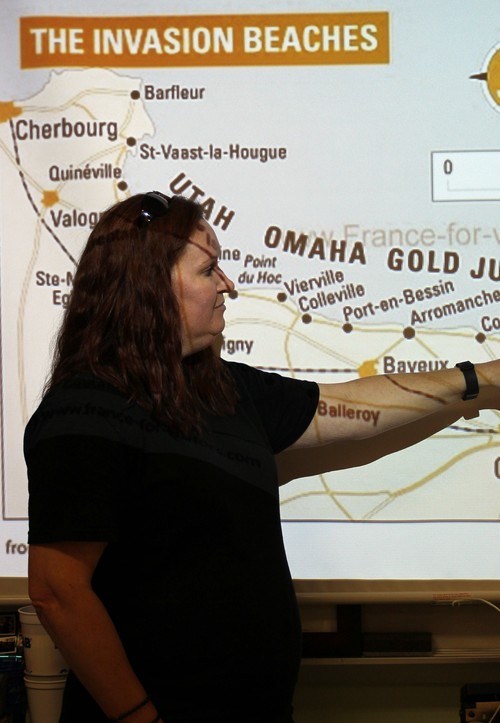Remembering the Men Behind the Memorials: World War II at MSMS
Julie Heintz brings history to life for students at MSMS in her World War II class.
February 15, 2016
Early on Tuesday and Thursday mornings, most people are still asleep or getting ready for their days during first period at MSMS. For students who have this period off, the time is used for extra sleep, breakfast and, sometimes, last-minute homework; meanwhile, history is being brought to life for students across campus in MSMS’s World War II class.
This 8:00-9:25 a.m. class is taught by Julie Heintz and attended by a group of students who sacrifice the extra sleep for the opportunity to learn about America’s part in the history of the world. As is implied, the class’s curriculum contains in-depth lessons on the entirety of World War II and the Holocaust; this includes the usage of power points, realistic movies and “position papers.”
These papers require students to critically analyze two or three opinionated essays on a certain topic that come from outside of the classroom. In their short essays (500-750 words), the students are expected to briefly summarize the essays and take an educated stance with one of them. This writing exercise helps immerse the students in the history by getting them interested, and it assists them in forming their opinions.
While this is a frequented exercise in the class, the final exam for the course is the primary source of writing; each student enrolled in the class is expected to write a research paper on a World War II veteran for their final grade.
At the beginning of the course, students are handed a roster of World War II veterans from Mississippi, divided by county. Heintz gives two choices; a student can choose a Mississippian veteran from the list or choose a family member that may not be listed if that member is a veteran of World War II. Since MSMS students come from across the state, she recommends that students choose a veteran who enlisted in their home counties. This way, research on the veteran can be done at a local library and archives, as well as online.
These papers are similar to a study that Heintz herself completed on Charles Dunbar Lancaster; she researched his life and wrote a paper on him before visiting his grave and giving a eulogy to her veteran. Last semester, senior West Givens completed his paper on his grandfather and presented it to the first World War II class of MSMS.
Once these veterans are chosen, World War II students have the entire semester to find all of the information and pictures that they can on their respective veterans and their veterans’ units. They are given a recommended checklist for finding information and suggested sources; however, Heintz requires that students go above and beyond that list to achieve a good grade.
Students are required to give logistical information about their veterans, such as their military serial numbers, important dates, unit information and awards for their service. Yet, they are prompted to go beyond that and really understand who their veterans were as people and as soldiers. The project forces World War II students to see the veterans of World War II as people with skills and lives, rather than simply statistics on a memorial or in a textbook.
A good project reveals the life of the soldier before the war, including educational background and marital status, and it explains the significance of the soldier to his unit, according to Heintz. Additionally, it emphasizes the importance of the soldier’s unit to the overall war effort by describing the unit’s journey, purpose and actions.
Once the papers are written, students are given instructions for building a website and have free rein on how to present their veterans lives to the world. The requirements are that there are pictures, an adequate amount of correct information and appropriate citations.
From there, students choose designs, layouts, quotes and pictures to engross the attention of internet surfers and their fellow peers during the final presentations on the last few days of class. Heintz takes the students’ websites and publishes them after they have been presented and edited one final time.
Senior Grant Henderson is currently taking the class. He says, “The class has made me more aware of the realities that took place. Before the class, World War II was just a point in history. Now, I am aware of the brutality that took place. Now, I see veterans of World War II and Holocaust survivors as valuable treasures that the world should listen to in order to get a grasp on what took place all those years ago.”









